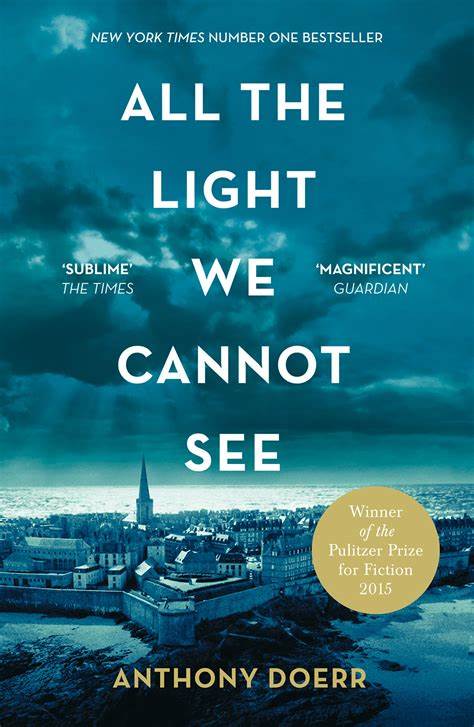Written by Anthony Doerr, published 2014. Summary, review, and spoilers ahead.
All The Light We Cannot See is a fictional story set during World War II. The events play out in various timelines, primarily from 1939 – 1945 with some much, much later updates for our main characters at the end of the book.
We primarily follow Marie-Laure Leblanc, a young blind French girl and Werner Pfenning, a smart young German boy thrust into the Hitler Youth and the German war machine despite his caring nature.
Marie-Laure is forced to flee Paris and hide at her uncle’s house in Saint-Malo, while her faither, an employee of a museum and holder of 1 of 4 potential real (3 other fake) giant diamonds that are of high interest by the Nazi’s. Her father hides the real diamond (which they do not know is the actual real one) and is swept off to a concentration camp leaving Marie-Laure, essentially, an orphan. Through side-stories outside of Marie-Laure, we learn the Nazi’s have uncovered the 3 fake diamonds… meaning they know the real one still exists and slowly locate it’s likely hidden with Marie-Laure.
Her tale of hiding from German soldiers searching her house is pretty harrowing. She hides for days in a closet, afraid to open a can of beans for fear it will cause too much noise and attack unwanted attention, despite the fact she’s literally starving. While this particular story is fictional, one can’t ignore that similar stories like this exist in real life from WWII.
On the other end, poor Werner is a sweet kid with expertise in radio technology, gets swept up into the Hitler Youth and witnesses first had the coldness of the Nazi regime. The boys in training are not treated particularly well, and those that don’t perform fair even worse. They tell the tale of Werner’s friend Frederick, a small boy who physically cannot keep up with the other boys. For his lack of athletic ability, he’s beaten constantly, ultimately he’s beaten irreparably bad and never the same. Again, one can see likely parallels to real life events.
Unfortunately, while the majority of Werner’s story is interesting, terrifying, and sad… the conclusion is unexpected, sad, and out of left field. I did not love how his arc ended, though again similar real-life stories may exist here.
Ultimately, this book was enjoyable though didn’t quite captivate me as much as the awards and critical success would suggest.
TLDR: Certainly a good read for anyone fascinated with WWII, though given the fictional nature of this book, and (in my opinion) awful ending to at least 1 of our 2 main characters, cannot give glowing remarks. Optional Read. 3/5 Stars.




